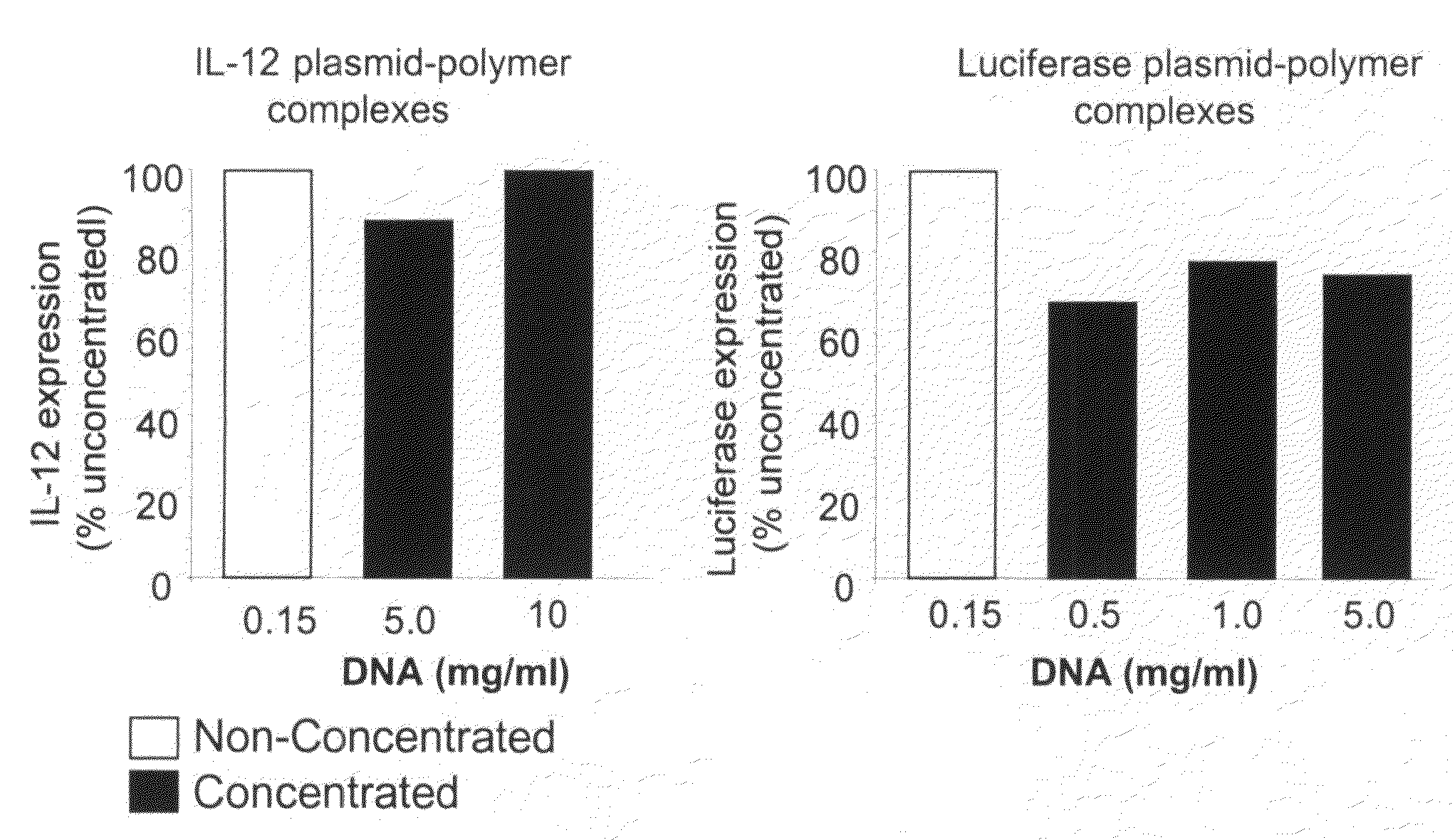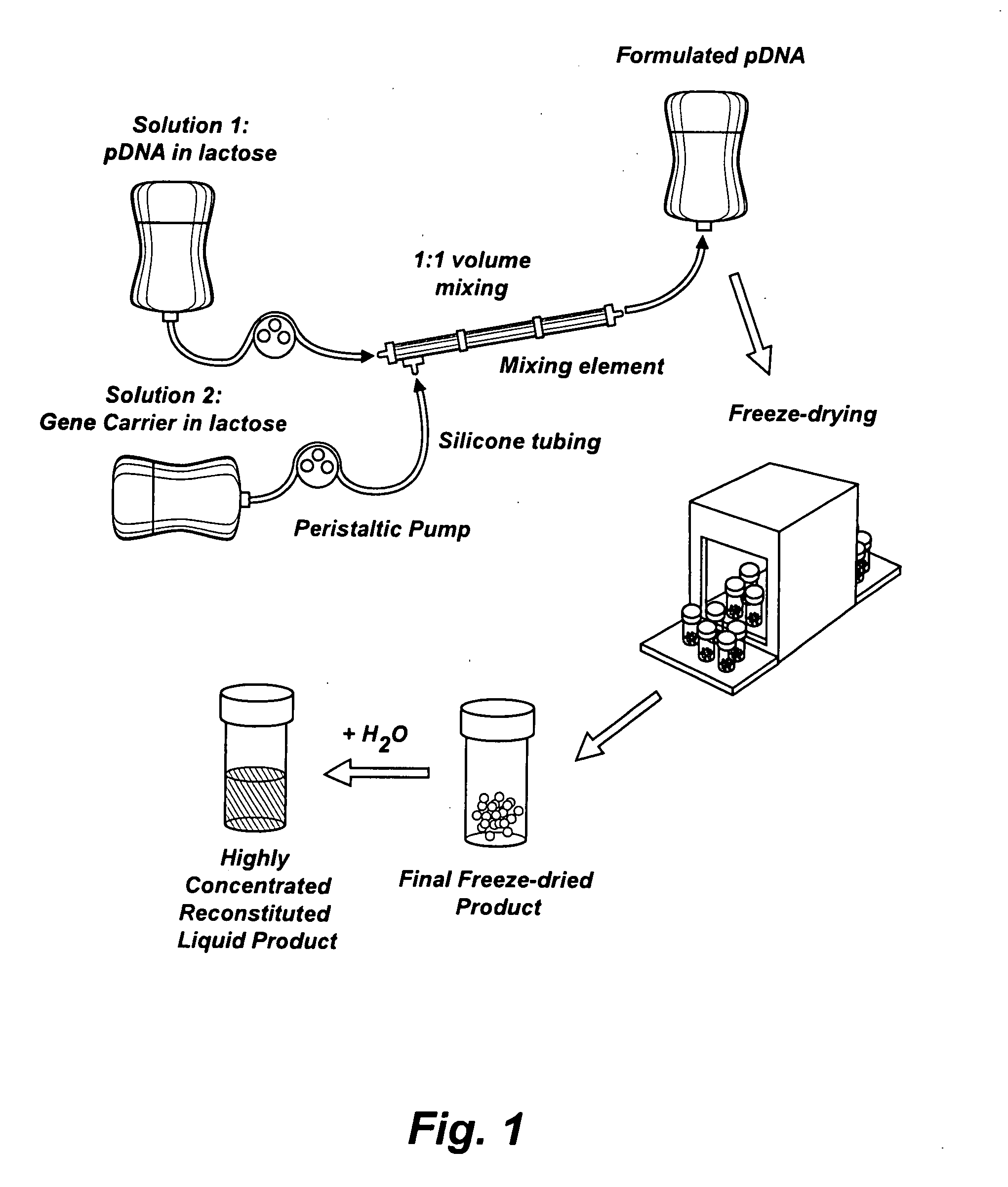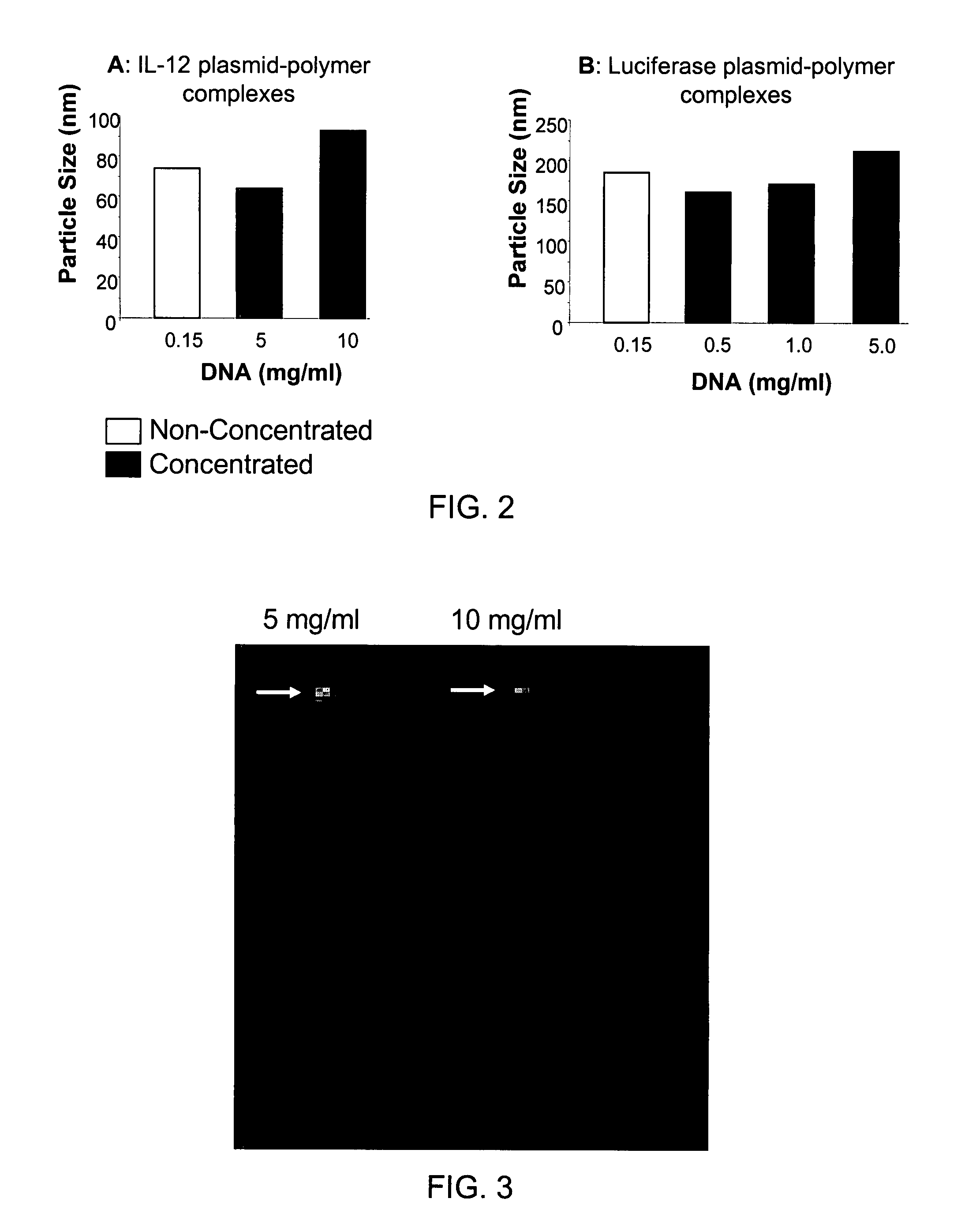Composition, method of preparation & application of concentrated formulations of condensed nucleic acids with a cationic lipopolymer
a technology of cationic lipopolymer and condensed nucleic acid, which is applied in the field of preparation of concentrated and stable formulations of nucleic acids with a cationic lipopolymer, can solve the problems of formulation stability, scale up, and low transfection efficiency of synthetic vectors, and achieve the effect of increasing efficiency and flexibility of nucleic acid transfection
- Summary
- Abstract
- Description
- Claims
- Application Information
AI Technical Summary
Benefits of technology
Problems solved by technology
Method used
Image
Examples
example 1
Preparation of Concentrated Liquid Formulations of Condensed Nucleic Acid with a Cationic Lipopolymer at a Small Manufacturing Scale
[0064]This example illustrates preparation of highly concentrated formulations of fully condensed nucleic acid at bench-scale production. This involves preparation of nucleic acid complexes with a cationic polymer followed by lyophilization and reconstitution to isotonic solutions. The nucleic acid used was a plasmid DNA encoding for IL-12 or luciferase gene, and the polymer was a polyethylenimine covalently conjugated with polyethylene glycol and cholesterol (PEG-PEI-Chol or PPC). The molar ratio between PEG and PEI and between cholesterol and PEI was 0.5-10 and 0.1-10, respectively. First, the DNA and PPC solutions were separately prepared at 5 mg / ml in water for injection and subsequently diluted to 0.15 mg / ml (DNA) and 0.554 mg / ml (PPC) at 3% lactose. The DNA in lactose solution was added to the PPC in lactose solution using a micropipette to a nitr...
example 2
Scaled Up Preparation of Concentrated Liquid Formulations of Condensed Nucleic Acid with a Cationic Lipopolymer
[0070]This example illustrates a scaled up preparation of highly concentrated formulations of fully condensed nucleic acid, as is shown in FIG. 1. This protocol has produced over 6000 mg of fully formulated DNA (as compared to 100-200 mg DNA produced from the small-scale preparation described in Example 1) and can be expanded to even higher production amounts. The scaled-up method involved mixing of the bulk DNA and polymer solutions with a peristaltic pump achieving an online mixing scenario to form the complexes followed by freeze-drying cycles compatible for large load. Briefly, the DNA and PPC solutions were prepared at 0.3 mg / ml and 1.1 mg / ml in 3% lactose, respectively. The two components were combined at a constant flow rate using a peristaltic pump (WATSON MARLOW, SCI 400) with a 0.89 mm internal diameter of silicon tubing (WATSON MARLOW, Z982-0088) at a flow rate o...
example 3
Measurement of the Particle Size of Concentrated Liquid Formulations of Condensed Nucleic Acid with a Cationic Lipopolymer
[0075]Highly concentrated formulations of plasmid DNA with cationic lipopolymer, PPC, were prepared as described in Examples 1 and 2. For particle size measurement, an aliquot of the liquid formulation was analyzed using 90Plus / BI-MAS Particle Sizer from BROOKHAVEN INSTRUMENTS Corp., Holtsville, N.Y. FIG. 2 illustrates the particle size of DNA / PPC complexes in pre-lyophilized or non-concentrated formulations (0.15 mg / ml DNA) and after reconstitution at higher concentrations ranging from 0.5 mg / ml to 10 mg / ml with IL-12 plasmid (FIG. 2A) or luciferase plasmid (FIG. 2B). Reconstitution at higher concentrations did not significantly influence the particle size, which suggests that the complexes are stable.
PUM
| Property | Measurement | Unit |
|---|---|---|
| concentration | aaaaa | aaaaa |
| molar ratio | aaaaa | aaaaa |
| concentration | aaaaa | aaaaa |
Abstract
Description
Claims
Application Information
 Login to View More
Login to View More - R&D
- Intellectual Property
- Life Sciences
- Materials
- Tech Scout
- Unparalleled Data Quality
- Higher Quality Content
- 60% Fewer Hallucinations
Browse by: Latest US Patents, China's latest patents, Technical Efficacy Thesaurus, Application Domain, Technology Topic, Popular Technical Reports.
© 2025 PatSnap. All rights reserved.Legal|Privacy policy|Modern Slavery Act Transparency Statement|Sitemap|About US| Contact US: help@patsnap.com



